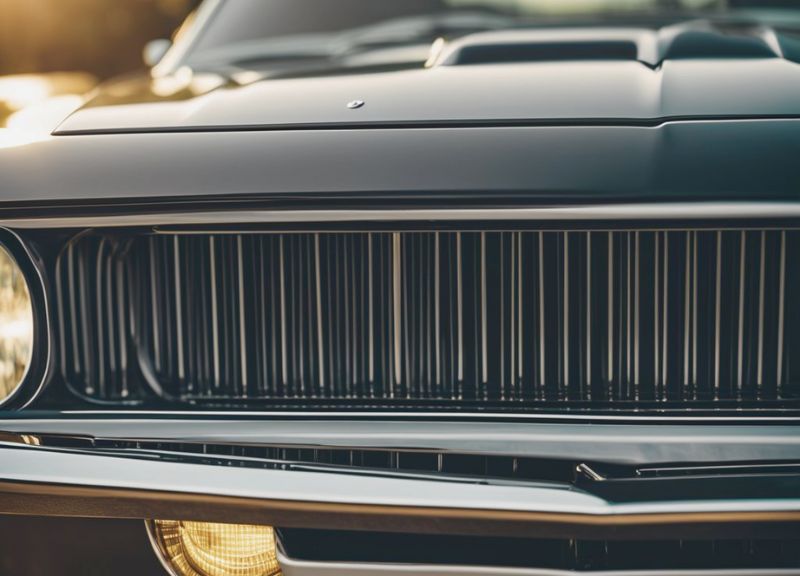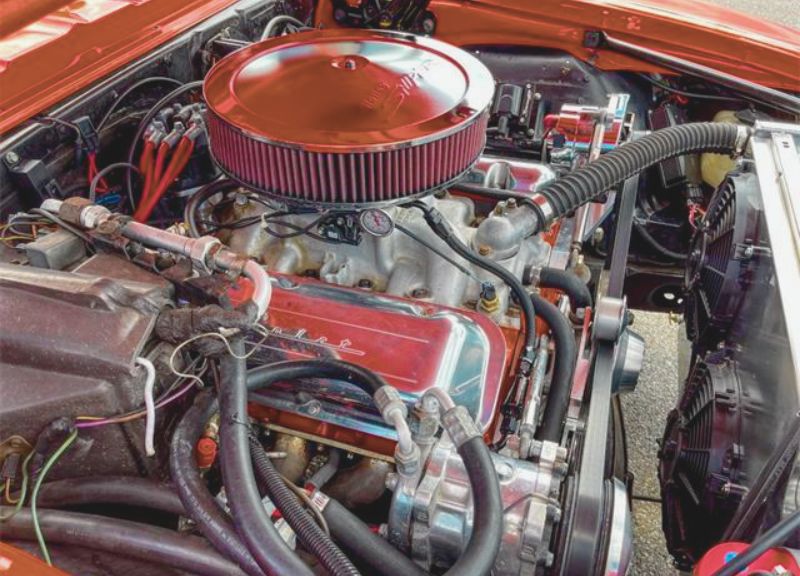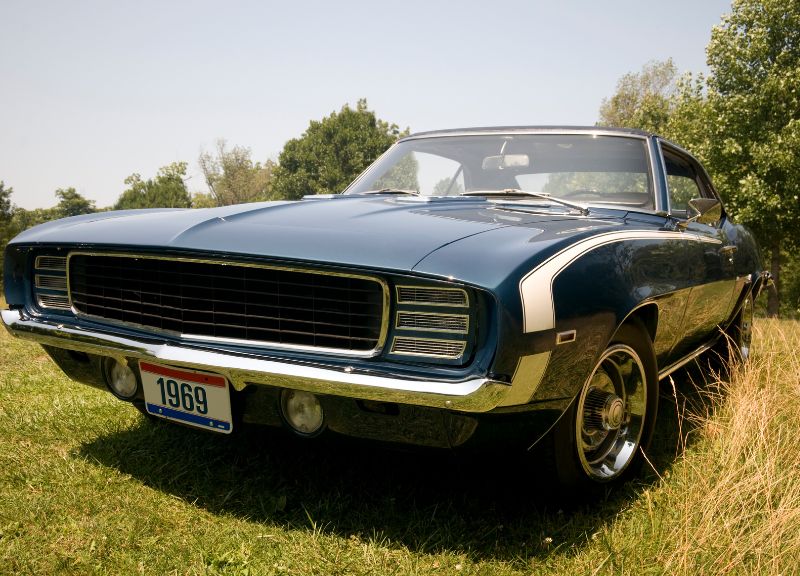Are you a muscle car enthusiast? Do you love classic cars and want to know more about the difference between the 68 and 69 Camaro? Look no further! In this article, we will dive into the details of these two iconic cars and explore the unique features that set them apart.
The 1968 and 1969 Camaros are first-generation models and share many similarities in their design. However, some key differences make each model distinct.
For example, the side marker lights on the 1968 Camaro are larger and rectangular-shaped, while the 1969 Camaro has narrower, rectangular-shaped side marker lights. Additionally, the 1968 Camaro has a strip of chrome that runs along the top of the doors, which is not present in the 1969 model.
If you’re in the market for a classic Camaro or want to expand your knowledge of muscle cars, understanding the differences between the 1968 and 1969 models is essential.
So, let’s take a closer look at these iconic cars and explore what makes them unique.
Table of Contents
Overview of 1968 and 1969 Camaro
If you’re a fan of classic cars, then you’re familiar with the Chevrolet Camaro, particularly the first-generation Camaro. The 1968 and 1969 Camaros are two of the most sought-after models by car enthusiasts. Both models have their unique features, but there are also similarities between them.
One of the most significant differences between the 1968 and 1969 Camaros is the front grille. The 1968 Camaro has a more rounded front grille, while the 1969 Camaro has a sharper, more angular front grille. The 1969 Camaro has a more aggressive look, with a longer hood and a more prominent front spoiler.
Another difference between the two models is the taillights. The 1968 Camaro has round taillights, while the 1969 Camaro has a more rectangular shape with a slant. The 1969 Camaro also has “shark gills” just in front of the back tires, which the 1968 Camaro lacks.
The 1968 Camaro has a strip of chrome that runs along the top of the doors, which the 1969 Camaro doesn’t have. The 1969 Camaro, on the other hand, has a narrow rectangular-shaped side marker light, while the 1968 Camaro has a larger rectangular-shaped side light.
The 1968 and 1969 Camaros have a V8 engine with a displacement of 5.0 liters or 302 cubic inches. The engines produce 290 horsepower and 290 lb-ft of torque. The 1969 Camaro, however, has a slightly higher compression ratio, which results in slightly more power.
In summary, the 1968 and 1969 Camaros are great classic cars with unique features. The 1969 Camaro has a more aggressive look, while the 1968 Camaro has a more rounded front grille and a chrome strip along the top of the doors. Both models have a V8 engine with similar power output.
Read the difference between 71 and 72 Chevelle.
The Difference Between The 68 And 69 Camaro
Design and Style

If you’re trying to distinguish between a 1968 and a 1969 Camaro, there are a few key design differences to look out for.
One of the most noticeable differences is in the front grill. In 1968, the Camaro had a split front grill with a chrome center divider bar. In 1969, the grill was changed to a single piece with a black center divider. This gives the 1969 Camaro a more aggressive look than the 1968 model.
Another difference between the two models is in the taillights. The 1968 Camaro had round taillights, while the 1969 model had a more squared-off design. The 1969 taillights were also inset into the rear panel, giving the car a more streamlined look.
The vent windows on the 1969 Camaro were also redesigned. While the 1968 model had two separate vent windows on each side, the 1969 model had a single, larger vent window integrated into the door glass. This gave the car a cleaner, more modern look.
Regarding model emblems, the 1968 Camaro had “Camaro” spelled out in individual letters on the front fenders, while the 1969 model had a single “Camaro by Chevrolet” emblem. The 1969 model also had “SS” emblems on the front grille and rear panel, which were not present on the 1968 model.
Finally, the 1969 Camaro had a wider range of pinstripes and body side moldings than the 1968 model. This allowed buyers to customize their cars to a greater extent and make them stand out.
Overall, while the 1968 and 1969 Camaros share many similarities in terms of body style and design cues, there are enough differences to make them easily distinguishable from each other.
Performance and Engine Specifications

Regarding performance and engine specifications, the 1968 and 1969 Camaros are quite similar. Both models offered various engine options, including the 327, 350, and 396.
The Z/28 package was also available for both years, which included a high-performance small block engine, headers, and other performance upgrades.
However, there were some differences between the two models. The 1968 Camaro had a unique strip of chrome that ran along the top of the doors, while the 1969 Camaro had a narrow rectangular-shaped side marker light. The 1968 Camaro also had larger rectangular-shaped side marker lights compared to the 1969 Camaro.
For the ultimate performance, the COPO Camaros were the way to go. These were specially-built Camaros that were designed for drag racing. The COPO 427s were particularly impressive, and the ZL-1 engine was the most powerful engine ever offered in a Camaro.
In summary, the 1968 and 1969 Camaros offered impressive performance and engine options, with similar engine choices and the availability of the Z/28 package.
However, there were some subtle differences between the two models, such as the side marker lights and chrome strip on the 1968 Camaro. For the ultimate in performance, the COPO Camaros were the way to go, with the COPO 427s and ZL-1 engine being particularly impressive.
Special Models and Packages
When it comes to the 1968 and 1969 Camaros, there were several special models and packages available that set them apart from each other. Let’s take a closer look at some of the most notable ones:
- SS (Super Sport): Both the 1968 and 1969 Camaros had the SS option, which included a 350 or 396 V8 engine, special hood, striping, and upgraded suspension and brakes. However, the 1969 SS also had the option of a 427 V8 engine, making it the most powerful.
- RS (Rally Sport): The RS package was available for both years and included hidden headlights, revised taillights, and special exterior trim. However, the 1969 RS had additional options, such as a woodgrain steering wheel and dash inserts, making it more luxurious than the 1968 RS.
- Pace Car: In 1969, a limited edition Pace Car model was produced to commemorate the Camaro’s role as the pace car for the Indianapolis 500. This model featured special paint and interior trim, as well as unique decals and badging.
- COPO: The Central Office Production Order (COPO) was a special ordering process that allowed dealers to order high-performance options not normally available to the public. In 1969, a limited number of COPO Camaros were produced with the powerful 427 V8 engine, making them some of the most sought-after Camaros today.
Overall, the 1968 and 1969 Camaros had a variety of special models and packages available, each with its unique features and options. Whether you’re looking for a powerful SS, a luxurious RS, or a rare COPO, there’s a Camaro for everyone.
Interior and Exterior Features

The 1968 and 1969 Camaros share many similarities in interior and exterior features. However, some key differences set them apart.
One of the most noticeable differences between the two models is the design of the signal lamps. The ’68 Camaro has a larger rectangular-shaped side marker light, while the ’69 Camaro has a narrow rectangular-shaped side marker light.
Additionally, the ’68 model has a strip of chrome that runs along the top of the doors, which is absent in the ’69 model.
Another difference between the two models is the design of the taillamp. The ’68 Camaro has a backup lamp integrated into the taillamp lens, while the ’69 Camaro has a separate backup lamp located below the taillamp lens.
The ’69 model also has lens dividers that separate the taillamp and backup lamp lenses, which are absent in the ’68 model.
In terms of hidden headlights, both the ’68 and ’69 Camaros have this feature, but the ’68 model has a vacuum-operated system, while the ’69 model has an electric motor-operated system.
The ’69 Camaro also has parking lights that are integrated into the front grille, while the ’68 Camaro has separate parking lamps located below the headlights.
When it comes to the interior features, the ’68 and ’69 Camaros have some differences as well. For example, the ’67 and ’68 models have a fuel filler located behind the rear license plate, while the ’69 model has a fuel filler located behind the rear taillamp.
Additionally, the ’68 and ’69 Camaros have different rear seat armrest usage, with all convertibles and all hardtops with a fold-down rear seat getting rear armrests in the ’68 and ’69 models, but the rest did not in the ’68 model.
Overall, while the ’68 and ’69 Camaros share many similarities in interior and exterior features, some key differences set them apart.
Whether you prefer the larger signal lamps and chrome strip of the ’68 model or the narrower signal lamps and lens dividers of the ’69 model, both vehicles offer a unique and stylish driving experience.
Identification and Collecting Tips
To collect a first-gen Camaro, it is essential to know the differences between the 1968 and 1969 models. Here are some identification and collecting tips to help you out.
Front End Identification
The front end of the 1968 Camaro looks similar to the 1967 model, while the 1969 model has a more aggressive look. The 1969 model has a slightly longer hood and a sharper grille with a more prominent center divider. The headlights are also set back further.
Rear End Identification
The rear end of the 1968 Camaro has a flat taillight panel, while the 1969 model has a concave panel with a more prominent lip. The 1969 model also has backup lights that are integrated into the taillights.
RPO Codes
RPO codes are essential when identifying a Camaro’s year, options, and production numbers. The 1968 and 1969 models have different RPO codes, so it is crucial to know which ones are specific to each model year.
Classic Industries
Classic Industries is a great resource for Camaro collectors. They offer many restoration parts, including body panels, interior trim, and mechanical components. They also have a knowledgeable staff that can help you identify parts and answer any questions.
Musclecars
First-gen Camaros are considered some of the most iconic muscle cars ever. As such, they are highly sought after by collectors and enthusiasts alike. If you want a Camaro, be prepared to pay a premium for a well-maintained example.
Collectors
If you are a collector, it is essential to do your research before buying a Camaro. Look for cars with documentation, such as original build sheets, window stickers, and dealer invoices. These documents can help verify a car’s authenticity and history.
Buying
When buying a Camaro, it is essential to inspect the car thoroughly. Look for rust, body damage, and signs of a poorly executed restoration. It is also a good idea to have a mechanic inspect the car’s mechanical components, such as the engine, transmission, and suspension.
’67 Camaro

While this section is focused on the differences between the 1968 and 1969 models, it is worth noting that the 1967 Camaro is also highly desirable among collectors. The 1967 model has a unique look sets it apart from the later models.
Fisher Body
The Fisher Body tag is on the driver’s side door jamb and contains important information about the car’s production. This tag can help verify a car’s authenticity and production numbers.
Deluxe Interior
The deluxe interior was an option on the 1968 and 1969 Camaros. This interior featured upgraded materials, such as woodgrain trim and brushed aluminum accents. If you are looking for a Camaro with a deluxe interior, be prepared to pay a premium.
In summary, the 1968 and 1969 Camaros have distinct differences that can help you identify and collect these iconic muscle cars. By knowing what to look for, you can ensure that you are getting an authentic and valuable example of these first-gen Camaros.
Legacy and Impact on Car Culture
If you’re a fan of classic cars, you know that the Camaro is one of the most iconic models in American automotive history. The Camaro has been around since 1967, and over the years, it has become synonymous with power, speed, and style. In this section, we’ll take a closer look at the legacy and impact of the Camaro on car culture.
One of the things that makes the Camaro so special is its rivalry with the Ford Mustang. For decades, these two cars have been locked in a battle for supremacy, and fans of both models are fiercely loyal to their chosen brand.
The Mustang and the Camaro have inspired countless car enthusiasts over the years, and they continue to be popular choices for collectors and drivers alike.
Another factor distinguishing the Camaro from classic cars is its connection to General Motors. GM has been a dominant force in the American automotive industry for over a century, and the Camaro is one of the company’s most beloved models.
The Camaro has played a key role in GM’s history, and it remains an important part of the company’s legacy.
When it comes to specific features of the Camaro, one of the most notable is the Hugger Orange paint color. This vibrant shade has become synonymous with the Camaro, and it’s a popular choice for collectors and enthusiasts.
Additionally, the JL8 four-wheel disc brakes are another key feature that sets the Camaro apart from other classic cars. These brakes were an optional upgrade for the 1969 Camaro, and they remain a sought-after feature for collectors today.
Finally, the Camaro has had a significant impact on car culture in terms of style and design. The car’s sleek lines and muscular build have inspired countless imitators over the years, and the Camaro has become an icon of American automotive design.
Additionally, the Camaro’s innovative ventilation system was a breakthrough at the time, and it helped to set the standard for modern car ventilation systems.
In conclusion, the Camaro is a true classic of American automotive history, and its impact on car culture cannot be overstated. Whether you’re a collector, a driver, or simply a fan of classic cars, the Camaro is a model that deserves your attention and respect.







